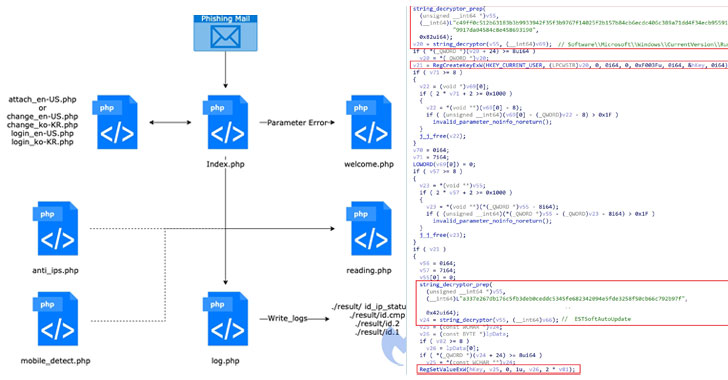[ad_1]
A Northern Korean threat actor lively since 2012 has been guiding a new espionage campaign concentrating on high-profile government officials related to its southern counterpart to run an Android and Windows backdoor for collecting sensitive facts.
Cybersecurity firm Malwarebytes attributed the activity to a threat acting professional tracked as Kimsuky, while using targeted entities comprising from the Korea Internet and Protection Agency (KISA), Ministry regarding Foreign Affairs, Ambassador from the Embassy of Sri Lanka towards the State, International Atomic Electricity Agency (IAEA) Nuclear Florida security officer, Deputy Consul General with Korean Consulate General around Hong Kong, Seoul National College, and Daishin Securities.
The development is only the latest inside a series of surveillance efforts directed at South Korea. Believed to be functioning on behalf of the North Korean language regime, Kimsuky (aka Purple velvet Chollima, Black Banshee, plus Thallium) has a track record of singling out South Korean people while expanding their victimology to the U.S., Russian federation, and various nations around Europe.
Last November, this adversary was linked to a brand new modular spyware suite referred to as “KGH_SPY,” which allows the item to carry out reconnaissance of targeted networks, log keystrokes, plus steal confidential information, in addition to a stealthy malware under the name “CSPY Downloader” that’s designed to ward off analysis and download added payloads.
Kimsuky’s attack system consists of various phishing internet websites that mimic well known internet websites such as Gmail, Microsoft View, and Telegram with an try to trick victims into coming into their credentials. “This is just about the main methods used by that actor to collect email addresses of which later will be used to send spear-phishing emails,” Malwarebytes science tecnistions Hossein Jazi said.
In using social engineering like a core component of its businesses, the goal is to disperse a malware dropper that will take the form of a ZIP archive report attached to the emails, which usually ultimately leads to the application of an encoded DLL payload called AppleSeed, a backdoor that’s been put to use by Kimsuky as early as 2019.
“Besides using the AppleSeed backdoor to target Windows consumers, the actor also has utilized an Google android backdoor to target Android users,” Jazi mentioned. “The Android backdoor can be viewed as as the mobile variant from the AppleSeed backdoor. It uses a similar command patterns as the Glass windows one. Also, both Google android and Windows backdoors purchased the same infrastructure.”
AppleSeed provides all the hallmarks of a typical backdoor, with myriad capabilities in order to record keystrokes, capture ?screenshots, collect documents with particular extensions (.txt, .ppt, .hwp, .pdf, and .doc), and gather data coming from removable media devices attached to the machine, all of which are next uploaded to a remote command-and-control server.
But perhaps the best discovery of all is that the menace actor calls themselves Thallium in the malware source program code, which is the moniker assigned by Microsoft based on its tradition regarding naming nation-state hacking teams after chemical elements.
[ad_2]
Source link




